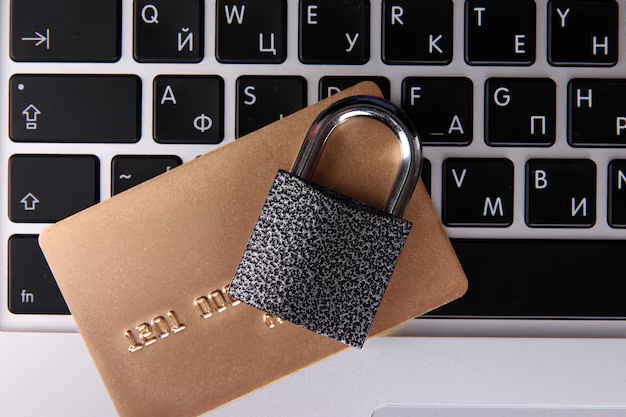Unraveling the Mystery: Where to Find the Security Code on Your American Express Card
In today's digital age, credit card security is more crucial than ever. Whether you're shopping online or managing a busy lifestyle, understanding every detail about your credit card is vital for security and peace of mind. One of the frequent questions that arise when using a credit card, especially American Express (Amex), is: Where is the security code located? This guide will not only answer that question but also provide a deeper insight into the significance of this code and other related topics.
Understanding the Security Code on Amex Cards
What Is a Security Code?
Before delving into the specific location, it's essential to understand what a security code is. Often referred to as the Card Security Code (CSC), Card Verification Value (CVV), or Card Identification Number (CID), this number is a safeguard against fraud. It's used in conjunction with your card number, particularly during online and phone transactions, to ensure the person using the card has physical possession of it.
Where Is It Located on an Amex Card?
For American Express credit cards, the security code differs slightly from other major credit cards. While Visa and Mastercard typically feature a three-digit code on the back of the card, American Express hosts a four-digit code on the front. This unique position is often right above the card number, providing an extra layer of protection by separating it from standard card information.
Why Is the Security Code Important?
Enhancing Transaction Security
The primary role of the security code is to protect you from fraud. By requiring this code for online or over-the-phone purchases, merchants ensure that the purchaser is likely the cardholder.
Mitigating Risk for Merchants
Merchants also benefit from requiring the security code, as it reduces the risk of chargebacks related to fraudulent transactions. It reassures them that the transaction is genuine.
Additional Layer After Data Breach
In the unfortunate event of a data breach, the security code serves as an additional defense line against would-be fraudsters. Unlike the card number, which is stored in many places, the security code is usually not kept in merchant databases.
How to Use the Amex Security Code
Online Purchases
When shopping online, you’ll be prompted to input your card information, including the security code, at the checkout stage. Ensuring the code entered is correct is crucial for transaction approval.
Phone Orders
When conducting transactions over the phone, provide the security code only to verified and trusted merchants. Keeping this number secure is as important as securing your card number.
Tips for Keeping Your Amex Card Secure 🔐
To enhance your security practices, here are some practical tips:
- Safeguard Your Code: Never share your security code or card details with untrusted sources.
- Monitor Statements: Regularly check your Amex statements for unauthorized transactions.
- Use One Card for Online Shopping: Identifying potential breaches becomes easier when you use one specific card for digital transactions.
- Leverage Digital Wallets: Consider using secure digital payment options for an added layer of protection.
Related Security Features on Amex Cards
Smart Chip Technology
Modern Amex cards come equipped with chip technology that makes card cloning significantly harder compared to traditional magnetic strips.
Contactless Payments
Amex's contactless payment option mitigates risk by offering a secure transaction method without the need to swipe your card physically.
Fraud Detection
American Express employs comprehensive fraud detection systems that monitor transactions for unusual activity, ensuring your card remains safe.
Next Steps for Cardholders
If you're new to using an Amex card or looking to maximize your card's security features, consider these steps:
- Enroll in Account Alerts: Receive notifications of any suspicious activity.
- Review Security Settings: Adjust security settings through the Amex app or website.
- Stay Informed: Keep up with updates and practices related to credit card security.
Key Takeaways ✔️
Here's a quick summary for easy recall:
- Security Code on Amex: Found on the front of the card, consisting of four digits.
- Function: Protects against unauthorized use, especially online or by phone.
- Code Importance: Essential for both consumer and merchant safety, providing a layer of fraud protection.
- Practical Tips: Regularly monitor statements, use digital wallets, and never share your code unnecessarily.
- Security Features: Includes smart chip technology and robust fraud detection mechanisms.
Navigating card security doesn't have to be complex. Understanding where to find the security code on your Amex card and the reasons behind its usage empowers you to take control of your financial security. Each small step strengthens your protection against potential threats in the digital landscape.
Ultimately, while numbers and codes are essential, knowledge is your most potent tool. Through mindful practices and leveraging available security measures, you can confidently manage your Amex card, ensuring your transactions are as secure as possible. Whether you're a seasoned cardholder or new to the world of credit cards, these insights pave the way for a more secure financial journey.

Related Topics
- Can a Non Frequent Traveler Benefit From Amex Platinum
- Can Amex Points Be Transferred To United
- Can I Access Delta Sky Club With Amex Delta Card
- Can I Cancel Amex Card Online
- Can I Do Wire Transfer With Amex Saving
- Can I Earn Points On My Corporate Amex
- Can I Pair Up Amex Platinum And Delta Skymiles Together
- Can I Pay Rent With Amex Gold Card
- Can I Put My Amex Platinum On Hold
- Can I Transfer Amex Points To American Airlines